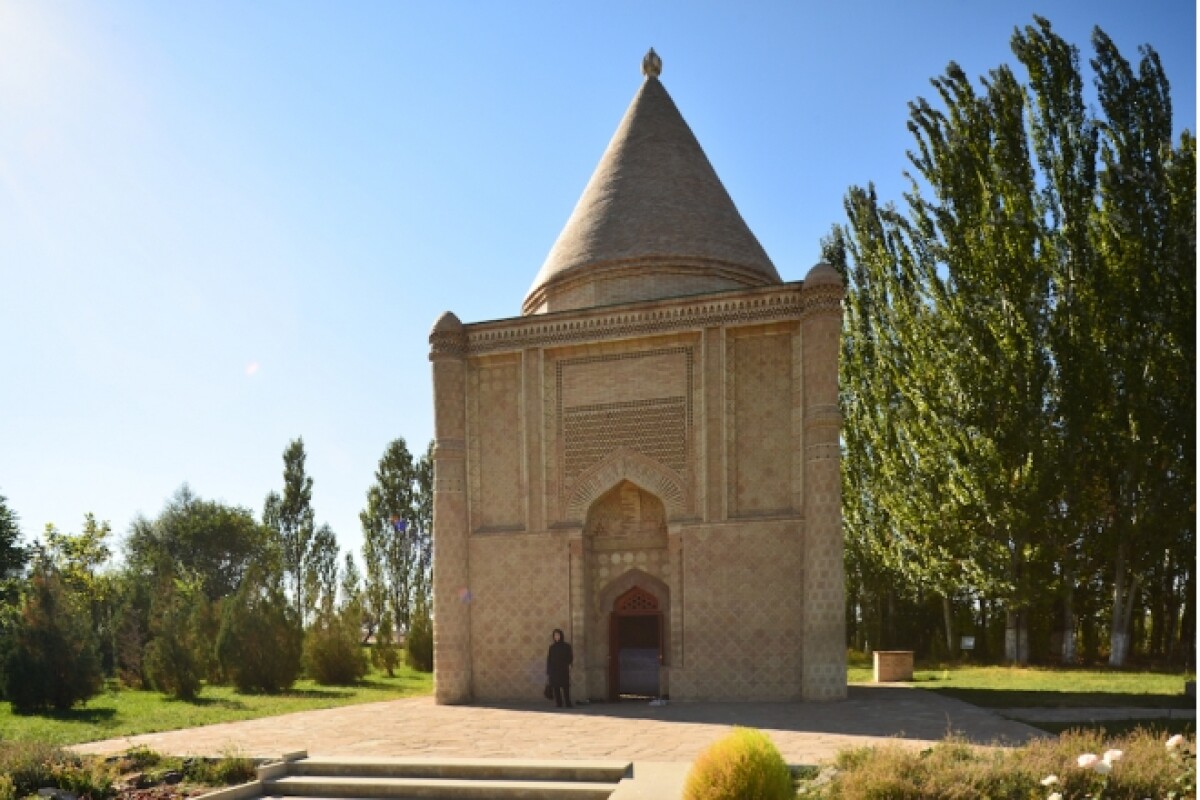
The national movement "Kazakhstan - 2050" organized a motocross "My country" dedicated to the 22nd anniversary of the Assembly of People of Kazakhstan.
Aisha Bibi mausoleum is a unique architectural monument of the XII century. The mausoleum of Aisha-Bibi is distinguished by the magnificence of the decorative design of the facades, solid cladding of terracotta slabs of various shapes and ornamentation of more than 60 varieties. The mausoleum is located 18 kilometers from the city of Taraz, in the village of Aisha Bibi, Zhambyl district of Zhambyl oblast. It is a pearl of medieval architecture. On the construction of the mausoleum there is no reliable information, but there are more than 28 versions of different legends. According to one of the legends, Aisha Bibi was the daughter of the scholar and poet of the 11th century Hakim Suleiman Bakyrgani. She was in love with the young ruler of Taraz Karakhan Muhammad, but her guardian Aykozha was against their marriage. Then she went to her lover without their permission, but on her way she was stung by a snake. On the site of her death a mausoleum was erected.
According to another version, Aisha was the wife of Karakhan, saddened by her untimely death, by the hands of the most skillful architects, he erected above her grave an unprecedented hitherto mausoleum.
.jpg)
The mausoleum itself is a square structure of 7.6 x 7.6 meters. The walls of the mausoleum are 80 cm thick. Wooden beams are laid in the walls in order to secure the connection of walls and columns. The mausoleum is built of burnt bricks; outside is faced with terracotta slabs. In the center of the facade of the mausoleum there is a niche with a pointed arch. Corner columns taper to the top, where they are decorated with a belt of tiles with floral ornaments. In the center of the mausoleum there is a tombstone (3 x 1.4 m). On the western columns there are belts with inscriptions written in Arabic alphabet. On one of the corner towers of the mausoleum there are scraps of lines from an ancient couplet: "Autumn. Clouds. Beautiful land."
Only the western wall remained from the original structure. The patterns of the mausoleum combine traditional forms of ornamental art, including geometric, zoomorphic and plant motifs.
The first research of the mausoleum was conducted by the Russian archaeologist Vassily Bartold in 1893, later the mausoleum was examined by V.A. Kallaur in 1897, and in 1938-1939 - an expedition of the Institute of History and Culture of Kazakh Branch of the Academy of Sciences of the USSR.
To protect the mausoleum, a protective glass cap was built in 1960, it was used for educational and tourist purposes. For years, archaeologists and historians have been discussing the revival of the monument. In 2002, Nishan Rametov was hired to restore the mausoleum and build a park around it.
.jpg)
Near the mausoleum of Aisha Bibi there is another well-known monument – mausoleum of Babadzha Khatun. According to legend, Babadzha Khatun was Aisha's companion on her last trip, and after her death she became the keeper of the mausoleum and was buried in 20 steps from it. The mausoleum of Babadzha Khatun has a cubic form, its dimensions are 6.9 x 6.9 x 5.0 m, the thickness of the walls is 1.23 m, and it is constructed of light burnt bricks with dimensions of 25 x 25 x 4.5 cm. The architectural composition of the mausoleum is simple. Three facades of the building, except for the western, are decorated with niches and medallions. The planes of the walls of the facades are decorated with false arched windows and niches. Circles of bricks made of figured masonry are laid out above the windows. Decorative niches and medallions are enclosed in a frame in the form of a letter P. Above the frame is a serrated horizontal strip formed by double bricks, turned corners to the outer wall. The same stripes run over the top of the parapet and the drum on which the dome is mounted. The building of the mausoleum is crowned with a faceted drum that served as the base for the 16-rib conical dome, but it has not survived to this day. In 1981, the dome was reconstructed according to the project of the KazProjectRestoration Institute.
Translated by Raushan MAKHMETZHANOVA
